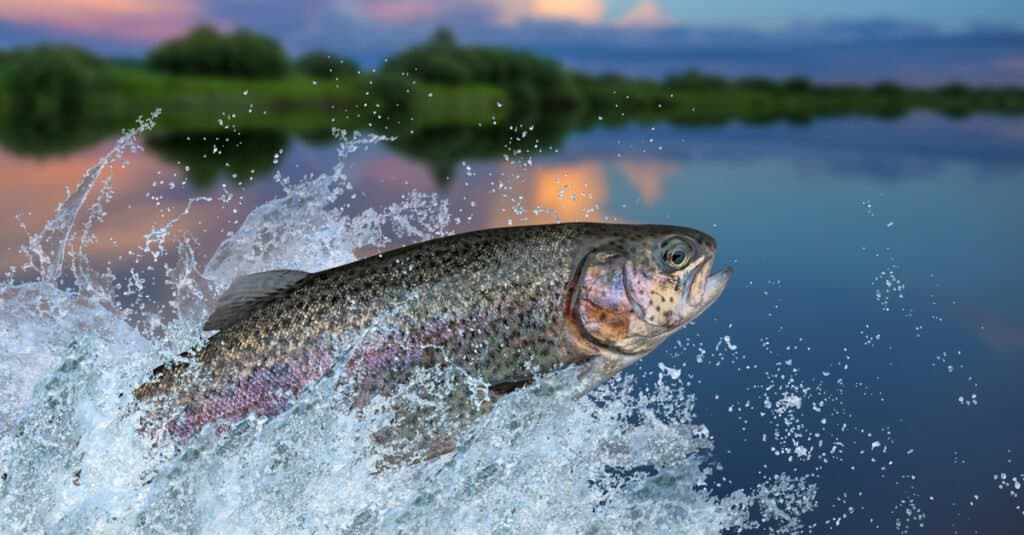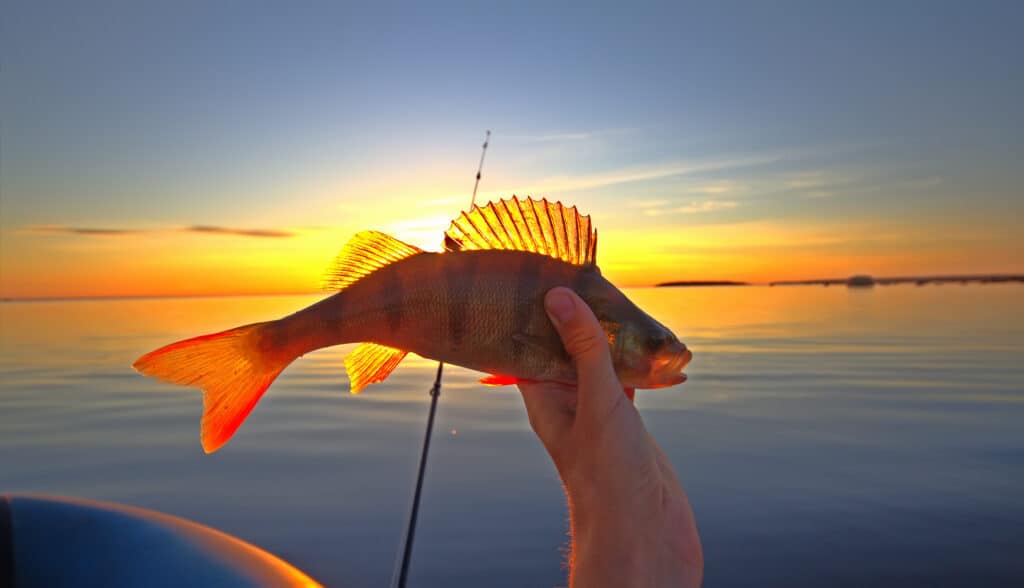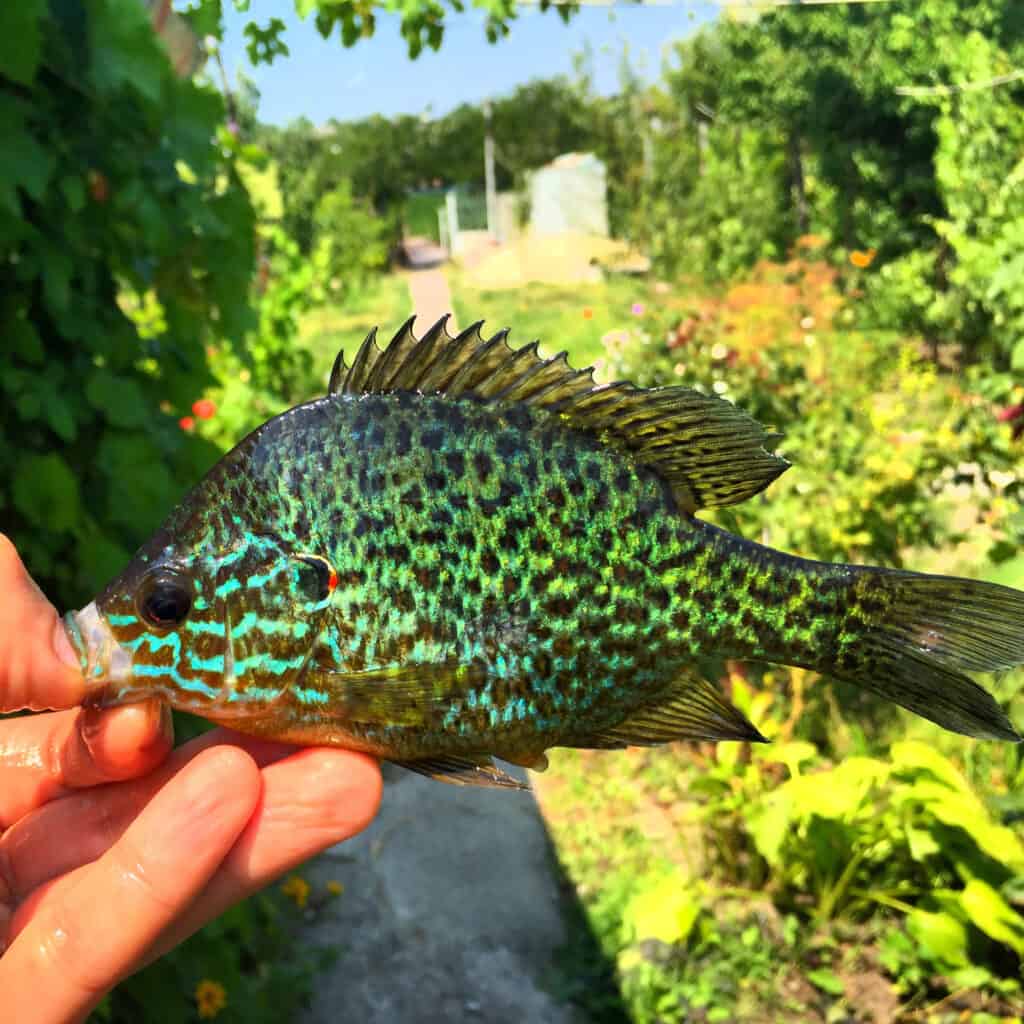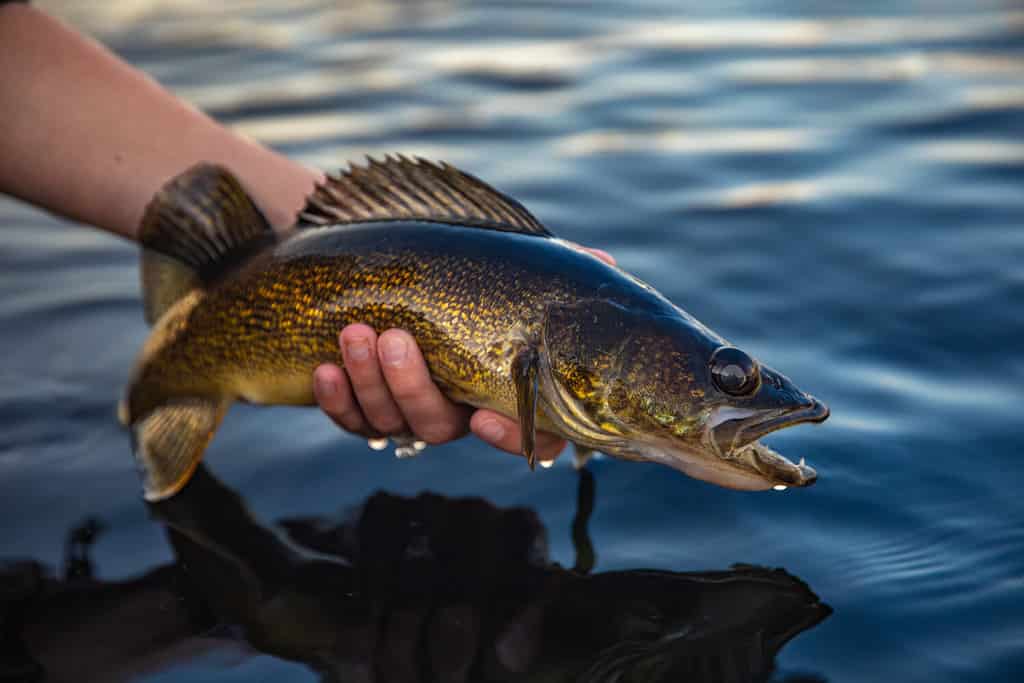North Carolina has excellent fishing opportunities for beginners and experts. Here, you can find award-winning and record-breaking fish in multiple lakes. Popular fishing lakes in North Carolina are Falls Lake, Lake Norman, Jordan Lake, High Rock Lake, and Lake Fontana. In many of these lakes, you can find gorgeous rainbow trout, which reach impressive lengths! Can you guess the size of the largest rainbow trout ever caught in North Carolina? Follow along to find out and discover other North Carolina fishing records!
What is the Largest Rainbow Trout Ever Caught in North Carolina?

On January 28, 2006, Leah Johnson, caught the largest rainbow trout in North Carolina. It was 20 pounds and 3 ounces.
©FedBul/Shutterstock.com
The largest rainbow trout ever caught in North Carolina weird 20 pounds and 3 ounces. Leah Johnson caught this massive rainbow trout in the Horsepasture River in Jackson County on January 28, 2006. To catch this trout, she used a Rapala fishing lure. Although Leah’s catch was impressive, it’s nowhere near as large as the world record. The current rainbow trout all-tackle world record fish weighed 48 pounds! That’s over double the size of Leah’s record.
About Rainbow Trout
Rainbow trout are vibrant fish with pinkish-red sides. Although most rainbow trout are silver, some subspecies appear golden. There are about a dozen subspecies and types of rainbow trout. Some subspecies are isolated like the Beardslee trout, only found in Lake Crescent in Washington. These unique fish only spawn in the Lyre River, near the outlet of the lake.
Rainbow trout are very popular game fish. They are sometimes considered the most challenging trout to catch. Keep reading to learn more about this trout species.
Appearance and Size
Rainbow trout differ a lot in size and appearance. Some rainbow trout may only reach up to 5 pounds while lake-dwelling trout are about 20 pounds. One of the smallest trout subspecies is the golden trout, which is generally 6 to 12 inches long. The heaviest golden trout ever caught was only 11.25 pounds. This is a stark difference compared to the largest rainbow trout ever recorded. The world-record rainbow trout is 48 pounds!
Most rainbow trout are blue-green or olive green with heavy black spotting. They may also have silver or white bodies. The coloration though depends on the trout’s region. Adult rainbow trout also have a broad reddish stripe along the lateral line, generally brighter in breeding males.

Rainbow trout are commonly found throughout the United States.
©Paul Winterman/Shutterstock.com
Distribution and Habitat
So, where can you find rainbow trout? Rainbow trout are widely distributed throughout the United States. In their native range though, you can find them in the coastal waters and tributary streams of the Pacific basin. However, they’ve been introduced to many parts of North America, which has even resulted in some landlocked populations. They live in crystal clear lakes with thick vegetation, lush lakes, and the ocean.
Diet
Rainbow trout also have a varying diet. Some of these bright and colorful fish consume small aquatic insects, algae, and fish eggs. Their diet depends on their environment and size. Small rainbow trout mostly depend on insects, including land insects that fall into the water. Larger rainbow trout, although not aggressive feeders consume small fish, shrimp, and other crustaceans.
Predators
Since rainbow trout aren’t the largest or most ferocious of fish species, you can imagine that they have quite a few predators. Aquatic mammals, fish-eating birds, and larger fish hunt rainbow trout. Black bears, humans, and river otters may eat these fish. To hide from their predators, rainbow trout hide under and in aquatic plants.
Other Fish in North Carolina
Although trout are popular game fish in North Carolina, there are other incredible records in the state. Keep reading to discover other common fish species and their state record!
Blue Catfish
Blue catfish are one of the largest freshwater fish in North Carolina. Currently, they are listed as Least Concern on the IUCN Red List. Blue catfish have a massive range. They are also considered invasive species in some bodies of water because of their lack of natural predators. Blue catfish are also opportunistic predators and destroy native fish populations. They consume fish, insects, freshwater mussels, and worms. These blue-grey fish are generally 2 to 3 feet long and weigh 30 to 70 pounds, sometimes more! The largest blue catfish ever caught weighed 143 pounds, so how does North Carolina’s record compare? Using gizzard shad, Rocky Baker reeled in a 127-pound and 1-ounce blue catfish in the Roanoke River on July 10, 2021.

The largest blue catfish ever caught in North Carolina was 127 pounds and 1 ounce.
©Thomsonmg2000, cropped and adjusted by Kostka Martin / CC0 – Original / License
Yellow Perch
Also in North Carolina is the yellow perch. The yellow perch is native to large parts of North America. It’s a small to medium-sized freshwater fish in the Percidae family. Yellow perch have long torpedo-like bodies and small fine teeth, like the strands of a brush. Although mostly golden yellow, they can also be bright or olive green with thick distinct stripes. On average, yellow perch are about 7.5 inches long. The largest recorded yellow perch was around 20 inches long. In North Carolina, there are two perch records, one for white perch, and the other for yellow perch. Evelyn G. Etheridge holds the record for the largest yellow perch ever caught in North Carolina. On February 8, 1990, she reeled in a 2-pound and 9-ounce yellow perch from the Indiantown Creek using a minnow as bait.

Yellow perch are sometimes olive or bright green. The largest yellow perch ever caught in North Carolina was 2 pounds and 9 ounces.
©Maximillian cabinet/Shutterstock.com
Bluegill
Another common fish in North Carolina is the bluegill. This small fish species is a member of the Centrarchidae family. These vibrant and shiny fish go by many names. They are sometimes called sunnies, brims, and breams. Bluegills aren’t just known for their blue coloration, but also a dark black ‘ear’ spot on each side of their body.
They are very popular game fish but can be challenging to catch as they have small mouths. Often though, they are caught with live bait like minnows, worms, or flies. Bluegills don’t grow very big. The largest bluegill ever recorded weighed less than 5 pounds! This is about the size of the largest bluegill caught in North Carolina. On July 27, 1967, Danny Case excitedly reeled in 4-pound and 5-ounce bluegill in Henderson County using a catalpa worm as bait.

On average, bluegill fish are 6 to 8 inches long.
©Brookieland/Shutterstock.com
Green Sunfish
Anglers can also find vibrant green sunfish in North Carolina. Green sunfish, like bluegills, are members of the Centrarchidae family. They are bright game fish, sometimes also kept in aquariums. Green sunfish are abundant in the United States. They are listed as Least Concern on the IUCN Red List. Generally, green sunfishes are blue and green, with yellow-flecked scales and coloration. They are also small, only reaching about 3 to 7 inches long. The maximum recorded weight of a green sunfish is 2 pounds and 12 ounces. The largest green sunfish ever caught in North Carolina only weighed 1 pound and 15 ounces. Victoria Navaroli used a worm as bait and caught this vibrant fish in a private pond on July 12, 2014.

On average, green sunfish only measure 3 to 7 inches long.
©Pocket Draw/Shutterstock.com
Walleye
The last fish on our list is the walleye. Walleye are native to most of Canada and the northern United States. Currently, this freshwater fish is listed as Least Concern on the IUCN Red List. They are very common in North America as game fish and are members of the Percidae family. Sometimes, walleye are known as yellow pike. These fish are generally olive and gold with five darker saddles that extend to the upper sides. Their bellies are also a light cream or white color.
Walleyes are about 2.5 to 3 feet long, but most only reach about 10 to 20 inches long. They can also weigh up to 25 pounds, although this number is very rare. The largest walleye ever caught in North Carolina was 13 pounds and 8 ounces. Lamar L. Cofer caught this large fish in 1986 in Lake Chatuge.

Walleye are listed as Least Concern on the IUCN Red List. They are very common fish in the United States.
©Harlan Schwartz/Shutterstock.com
The photo featured at the top of this post is © iStock.com/Max2611
Thank you for reading! Have some feedback for us? Contact the AZ Animals editorial team.







